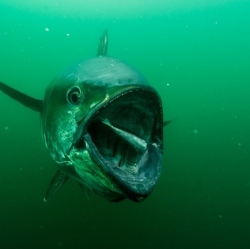
The NASA Outer Planets Assessment Group (OPAG) Roadmaps to Ocean Worlds (ROW) group has a plan for exploring the ocean worlds in our solar system. Here is a summary of their plan for the exploration of ocean worlds like Europa and Ceres over the next several decades.
They want to identify all of the ocean worlds, characterize their oceans, evaluate their habitability, search for life, and ultimately understand any life we find. The team supports the creation of an exploration program that studies the full spectrum of ocean worlds. They will explore known ocean worlds such as Europa and candidate ocean worlds such as Triton as well. The confirmed ocean worlds of Enceladus, Titan, and Europa are the highest priority bodies to target.
Triton is the highest priority candidate ocean world to target in the near term.
Rigorous research and analysis studies are needed to enable the planning of future ocean worlds missions. Progress needs to be made in the area of collaborations between Earth ocean scientists and extraterrestrial ocean scientists.
Enceladus, Europa, Titan, Ganymede, and Callisto have known subsurface oceans, as determined from geophysical measurements by the Galileo and Cassini spacecraft.
Europa and Enceladus have geysers from ocean to the surface. There is potential for interactions between the oceans and a rocky seafloor, which is important for habitability considerations. The subsurface oceans of Titan, Ganymede, and Callisto are expected to be covered by relatively thick ice shells, making exchange processes with the surface more difficult. There is no obvious surface evidence of the oceans.
Titan has a large subsurface ocean. It also has large surface lakes of liquid methane. Those lakes are readily accessible and could have exotic forms of life. Titan may have transient surface liquid water such as impact melt pools and fresh cryovolcanic flows in contact with both solid and liquid surface organics. These environments present unique and important locations for investigating prebiotic chemistry and, potentially, the first steps toward life.
Triton, Pluto, Ceres, and Dione are considered candidate ocean worlds based on hints from limited spacecraft observations. Uranian moons need better observations to confirm uncertain but credible ocean possibilities.
The Europa Clipper is a flagship mission in Phase B of development. The goal of Europa Clipper is to establish the habitability of Europa. An astrobiology-focused Europa Lander mission has been studied. The ROW team supports a Europa-landed search-for-life mission.
The ESA JUICE mission is set to explore Ganymede. This mission will characterize Ganymede’s subsurface ocean, located between layers of near-surface and high-pressure ices, to better understand the formation and evolution of this ocean world.
The habitability of Enceladus’ ocean has been sufficiently established by using Cassini measurements. A search-for-life mission could be sent as a next step.
Callisto is an ocean world that remains to be fully characterized. It has a deep subsurface ocean. A smallsat mission to Callisto should be studied.
Triton is the highest priority target to address as part of an Ocean Worlds Program. This priority is given based on the extraordinary hints of activity shown by the Voyager spacecraft (plume activity; smooth, walled plains units; the cantaloupe terrain suggestive of convection). It has the potential for ocean-driven activity given by Cassini results at Enceladus. The source of energy for Triton’s activity remains unclear. Triton likely represents a captured Kuiper Belt object (KBO). Understanding Triton will help us understand thousands of Kuiper Belt objects.
Both Miranda and Ariel show evidence for recent significant tectonism that could indicate subsurface oceans. A mission to the Uranian system should set, as a top priority, flybys of these moons to search for evidence of subsurface oceans.
Ceres is a unique case, a hydrous dwarf planet in the asteroid belt. Ceres is half water by volume. It has a 40-km-thick shell dominated by volatiles.
